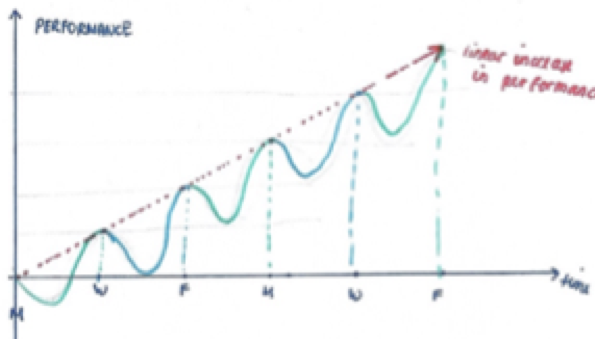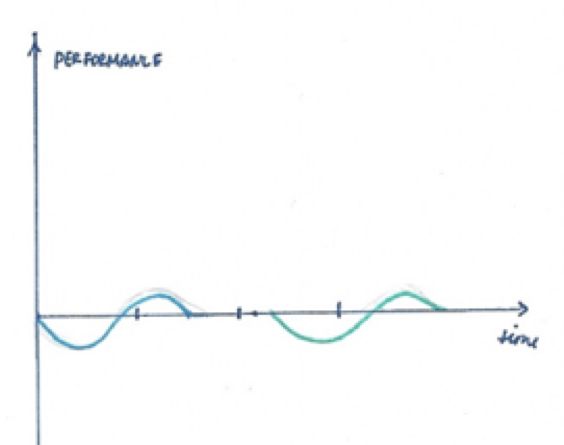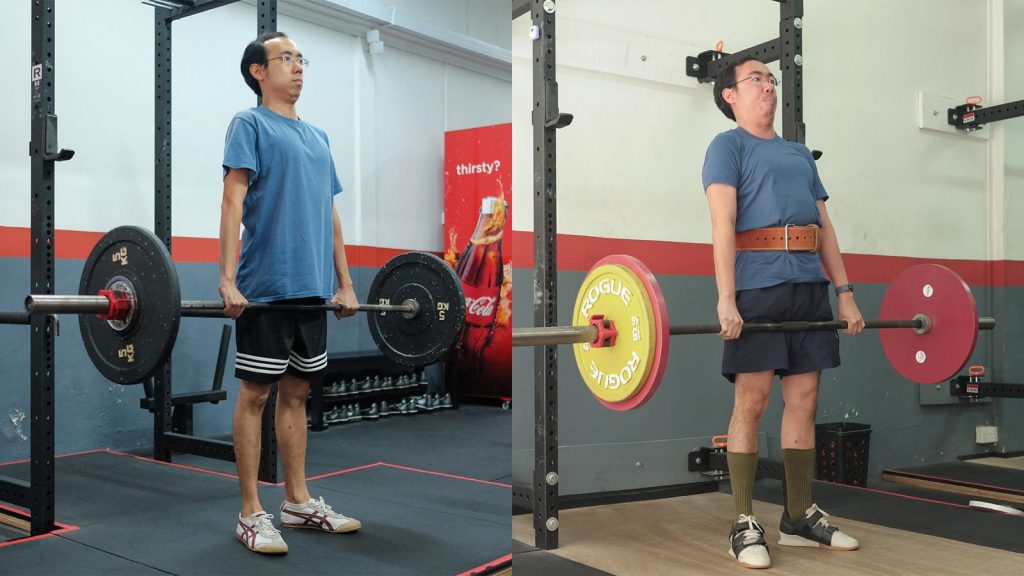Oh boy, what a boring title! The content of this article could potentially be boring, as with the message that I’m trying to send across. What is said here is not a secret or “that one weird trick” but merely a reminder that if you want to be good at anything, you have to be consistent and put in the work.
Despite being in the fitness industry for a little under 2 years, I count myself blessed to have met and coached a diverse profile of clients at Hygieia Strength & Conditioning. Due to a variety of factors, our clients’ progress will differ from each other. However, there is one common factor amongst trainees who are more successful and it comes as no surprise that it’s their consistency.
Hierarchy of Variables in Strength Training
This topic has been written about ad nauseum so I’ll not go into the details but let’s quickly recap. To train towards a specific goal, there are a number of variables that you can manipulate to produce the stress required to produce the desired outcome. For instance, exercise selection, frequency, load, rep range, and rest time are some of the variables to manipulate. For strength training, the tier 1 variables (which are the most crucial one) are frequency, exercise selection, and technique.
Training in a Starting Strength Affiliate gym has its merits – you’ll only perform the most effective and biggest bang for your buck lifts during your session. The rationale behind our exercise selection and lifting techniques are outside the scope of this article and will be saved for a future article.
The Stress-Recovery-Adaptation (SRA) Cycle
Based on Hans Selye’s General Adaptation Principle, we go through three different when we train. The workout that we do in the gym acts as a stressor to our bodies. Given sufficiently, this stressor will temporarily reduce our performance capabilities and this decrease in performance sometimes, but not necessarily, is accompanied by delayed onset muscle soreness (DOMS). The next phase is recovery – our body heightens the hormonal and cellular activities as an attempt to recover from the stress imposed. The system adapts to the previous stress imposed by increasing our baseline of performance.
The graph below (fig. 1) illustrates a successful attempt of the “Novice Linear progression”. Performance capabilities dipped after the lifter’s system was stressed from training. After recovering from that stress, the lifter’s performance gradually goes beyond the previous baseline. Once the new performance baseline is achieved, we repeat the process again to keep increasing the performance baseline. For us, this means the lifter gets stronger.
 Fig. 1
Fig. 1
Why don’t we have long gaps between workouts? Why does consistency matter?
The higher your baseline performance is, the more resources are demanded from your body to progress. If you are not exposing yourself to a similar or more stressful event, your body’s system wouldn’t maintain your current muscle muscle and strength. This is the body’s survival mechanism at work – muscle mass is metabolically expensive so your body will try to conserve as much energy as possible by atrophying your hard earned muscle. This will result in a gradual decrease in performance. What will happen when you come back to the gym after a long break? You will have to repeat the same SRA cycle to get back to where you were before taking a break. Do this often enough and you’re not going to make any progress over the long term – you’ll simply teeter-totter back and forth (fig. 2). And you will be left to wonder, why am I paying my gym without any visible results?
 Fig. 2
Fig. 2
This is, of course, an exaggerated example of the issue. If you train consistently long enough and the further you are from the absolute baseline, the longer it will take to detrain back to where you started.
Identifying why you can’t get consistent
There are many excuses reasons for not being able to be consistent, such as:
- Busy with (fill in the blank)
- Not enough time
- Feeling tired/ not recovered enough
- Travel
- Illness
- Injury
- Lack of visible goal/ lack of motivation/ bored
- Progress stalls/ legitimately stuck without any solution
- Lack of accountability (especially if you are training alone without supervision)
- Life happens
- Etc.
You get the idea. I’ll stop now because this can be a never-ending list.
Seeking for solutions
There are definitely cases whereby it is inevitable or that are of a higher priority than training that will force you to skip training(s). The best way to restart your training routine is to get back into training once everything is resolved. Don’t wait for the new year to make a resolution! Do it immediately. Remember Newton’s law of inertia!
For external reasons, such as work or other life commitments, it’s best to prioritise and find out how you can make time to complete your training. Shaun has an article about training while travelling here. Check out your schedule and be honest with yourself – how many days/hours can you commit to your fitness goal? If you can realistically only do 2 workout days in a week, there’s no point in trying an 8-week 4 days split.
For internal reasons, such as motivation level, or just lack of discipline, I found that doing these 2 things work the best for me and I hope that they’ll work for you too.
1. Hire a coach:
Whatever your goals are, there are coaches who can help you with your training. Even as a professional coach, I fully appreciate someone giving objective feedback for my lifts. If you have been lifting alone for some time and your progress has stalled, hiring a good coach can be the best decision you’ll make.
Never once did I regret paying my coach. The money spent is an investment in not only having someone to make sure I was training effectively towards my goal, it is also the assurance of consistency. Sure enough, I’m less likely to skip any workout because somebody is expecting me to train at that moment. You can also get this from being part of a lifting community. If your gym buddies are expecting you to train together on Tuesday evening, you’ll most likely be there. For that, I like being in a group class coaching session. It’s a good combo of getting actual coaching and the camaraderie of training with fellow lifters.
2. Join a meet:
Meet registrations normally open 3-4 months before the date, and probably announced 6 months before. Set a target in your mind and commit for a meet. You’ll find that each training session will be more valuable. By having something to look forward to a few months down the road, you can build up your momentum for your training so that you can perform well in the meet.
Does it also give you extra stress? Yeah, definitely! An adequate dose of stress is always good to drive progress. From my experience, I like having 2 full meets (either powerlifting or strengthlifting) per year. It gave me enough gap in between to show improvement in lifts, without burning out. However, this is just a preference, some people like to do more, some want less.
If you have been lifting for a while but haven’t considered joining a meet, I would highly recommend you to join one soon. Never in my life have I had a big group of people cheering and rooting for me to pull the bar up. It’s not only a platform to test out your max, but also an experience unlike any other.


